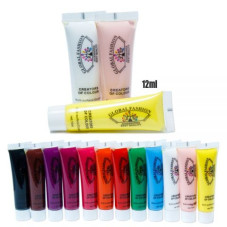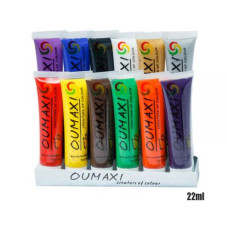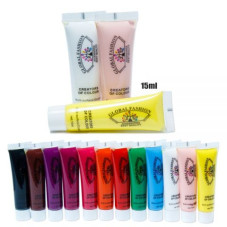Filters
Color
Density
Effect
Oil Paint: The Timeless Classic
Oil paint, with its rich color and unique texture, has been the medium of choice for artists since the Renaissance period. It has stood the test of time because of its versatility, durability, and ability to create a depth of saturation and luminosity that is unmatched by any other medium. In this article, we’ll take a closer look at the history of oil paint, its composition, and how it is used by modern-day artists.
History of Oil Paint
Oil paint was first used by Flemish painters in the early 15th century. However, it was Flemish artist Jan van Eyck, who is credited with discovering the benefits of oil paint. His use of oil paint in the painting “Adoration of the Mystic Lamb” created a new level of luminosity and depth that was unmatched by any other medium at the time.
Composition of Oil Paint
Oil paint is made up of pigments which are mixed with a binder. The most commonly used binder is linseed oil, which is extracted from flax seeds. The pigment is then mixed with the binder to create a thick, buttery consistency that can be applied to a variety of surfaces. The consistency of the paint can be altered by adding solvents, such as turpentine, which makes it more fluid, or by adding more pigment to create a thicker texture.
Uses of Oil Paint
Oil paint is the perfect medium for artists who want to create vibrant, lasting images. It is often used on canvas, but can also be used on a variety of surfaces, such as wood, metal, and paper. It dries slowly, which allows the artist to work with the paint for a longer period of time, and can be reworked or corrected even after it has dried. This is why oil paint is the preferred medium for portrait and landscape art.
Designers have also started to use oil paints in their work, such as in creating unique patterns on furniture, adding a touch of artistic flair to plain surfaces. In the beauty industry, oil paint is also used as a nail polish, offering a long-lasting and highly pigmented finish.
Conclusion
Oil paint is the choice of artists and designers alike for its versatility, durability, and the unique textures and colors it creates. It has stood the test of time as a medium of choice for creating paintings that will last for centuries. It is a classic medium that continues to inspire and challenge artists to push the boundaries of their creativity.







